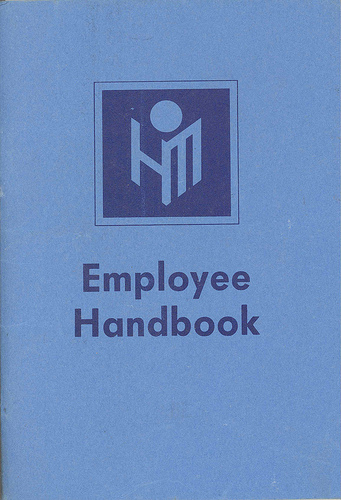While the name “dorm room start-up” may seem somewhat subdued, eliciting the image of a cash-strapped, ramon noodle-eating student trying to scrape together a little extra income, for those of more enterprising natures, college provides the fertile ground on which to develop and expand some pretty hefty business ideas. From their humble student quarters, a select group of college entrepreneurs have produced some of the most influential, well-known, and dare we forget, profitable companies around.
Which businesses got their start at college? Here’s a brief rundown of the most famous (and infamous) college dorm room businesses ever:
1. FedEx: While this first entry on the list did not technically start operating while its founder, Fred Smith, was in college, it deserves a spot due to its almost legendary status. The story goes that when Mr. Smith was a student at Yale University, he composed a term paper detailing how the shipping industry would change as a direct result of changing informational needs and advances in technology. Though the paper received a tepid response from the professor, from it emerged the well-known overnight shipping company, FedEx. Today, FedEx boasts some $40 billion in yearly revenue.

2. WordPress: While a freshman at the University of Houston, Matt Mullenweg teamed up with Mike Little and b2 developer Michel Valdrigh and eventually created WordPress, one of the most prolific blogging platforms around.

3. Napster: Sean Fanning was a freshman at Northeastern University in Boston when he developed Napster, the hotly contested P2P file sharing service that allowed users to share MP3 music files. Though it was forced to file for bankruptcy after numerous high profile recording studios and artists lined up to sue the company, it is still fondly remembered by its users.

4. Dell Computers: Michael Dell, started PC Limited while attending the University of Texas, Austin. With $1,000 in start-up capital, he later dropped out and began building Dell Computers. Today, he is worth an estimated $13.5 billion.

5. Facebook: Mark Zuckerberg originally developed “thefacebook” as it was called then, for his fellow students at Harvard. He later dropped out of college to develop the program further. The result: Facebook is now the biggest social network in the world with over 500 million users.

6. Inogen: In an effort to improve her grandmother’s quality of life, Allison Perry teamed up with two of her classmates, Brenton Taylor and Byron Myers at the University of CA, Santa Barbara, to create a better, lighter, and more mobile medical device for the delivery of oxygen. Inogen was later recognized with the Ernst & Young Entrepreneur of the year award, and to date they raised 55 million in venture capital.

7. Shoeboxed: In an effort to help small business owners make some sense of their financial paper trail, Taylor Mingos started Shoeboxed from his Duke University dorm room. Customers email, fax, or send in special envelopes stuffed with receipts and other paper “scraps” and the company both scans and organizes them as digital records.

8. Biz Chairs: Like FedEx, Biz Chairs, breaks away from the pack because its founder, Sean Belnick actually came up with the idea when he was only 14 years old. But it was all the time and effort he put into his venture as a 20 yr old freshman at Emory University that turned it into a full fledged business, supporting almost 100 employees and bringing in over $25 million in revenues.

9. Google: Google founders, Sergey Brin and Larry Page, developed the idea for a more powerful and effective search engine while working together as PhD students on the Stanford Digital Library Project. Google’s original domain name was actually “google.stanford.edu.” Today, Google is a massive conglomerate offering an impressive range of ubiquitous Internet-based products and services.

10. Plaxo: Cameron Ring started working on Plaxo with his co-partners, Sean Parker of Napster fame and Todd Masonis, while he and Masonis was earning their master’s degrees at Stanford University. The versatile online address book and social networking service, allows for automatic updating and access of contact information across numerous programs and platforms. It also connects users to pertinent social networking information. In July of 2008, Plax was bought by Comcast.

11. College Hunks Hauling Junk: As a student at the University of Miami, Omar Soliman submitted a business plan for a trash-removal service to the Rothschild Entrepreneurship Competition and won the $10,000 first prize. Since then, he and his partner Nick Friedman of Pomona College, have expanded the company, called College Hunks Hauling Junk, nationwide with 21 franchises and 12 company-owned locations.

12. Venus: The well-known line of slinky swimwear, swimsuits, and women’s clothing began in 1982 under the name Titan Bodybuilding, while Founder Daryle Scott and four of his friends were attending Stetson University. The company initially marketed bodybuilding apparel and equipment but eventually expanded to include a variety of women’s clothing.

13. Tripod: Tripod, the well-known web hosting service, was founded by Bo Peabody and Brett Hershey, two students attending Williams College. At its inception, the site targeted college students and young adults with a collection of resources and services, such as résumé-writing help, website building tools, and links to relevant products and businesses. Only later were its trademark web hosting services added. Tripod was eventually bought out by Lycos.

14. Theglobe.com: One of the first social networking sites in the days before Facebook and MySpace ever came on the scene, theglobe.com was created by Cornell University students Todd Krizelman and Stephan Paternot. The site featured specialized content, chat rooms, and games, allowing users with similar interests to interact. When the company went public in 1998, it posted the largest initial gain of any IPO in history, 606%.

15. College Bellhop: Alan Ringvald, then a student at Brandeis University, came up with the idea for College Bellhop when he was unable to fork over the hefty cost to hire a professional service to clean his apartment. Together with Boston University’s Assaf Swissa, he developed the company which provides cleaning, laundry, and food delivery services at five different college campuses.

16. Microsoft: Many are familiar with the fact that Bill Gates founded Microsoft as a student in Harvard. He quickly dropped out to build up the software empire synomous with his name. Today, he is one of the richest people in the world with an estimated worth over $54 billion.

17. Citadel: Kenneth Griffin began managing two funds while at Harvard University. Shortly thereafter, he founded Citadel, currently one of the most successful hedge funds worldwide. Griffin himself is estimated to be worth about $3 billion.

18. EcoTech Marine. In 2003, Pat Clasen and Tim Marks, both students at Lehigh University began developing the idea for an aquarium equipment company. Shortly thereafter, they received the start up financing they needed to put their plan in action. The company’s cutting edge technology propelled it to one of Inc.’s 500 fastest-growing companies, and as of 2009, it sported revenues of almost $4 million.































